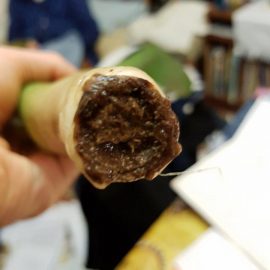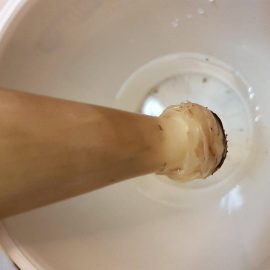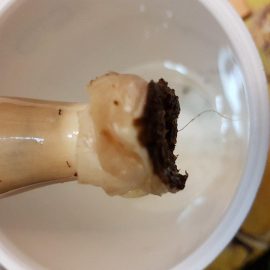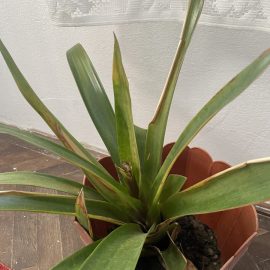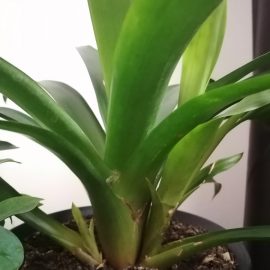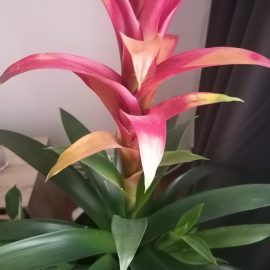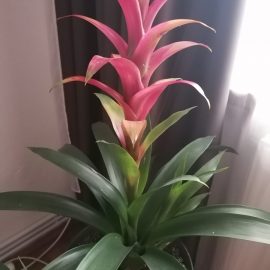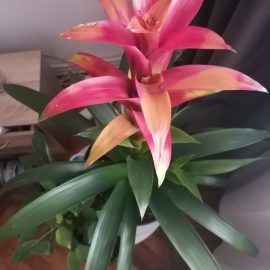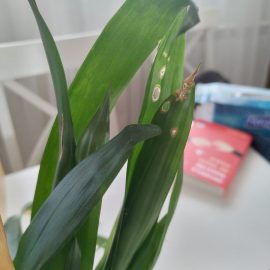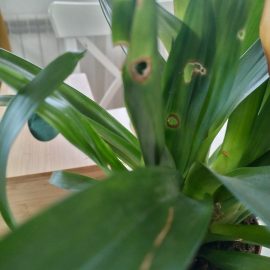Guzmania, plant care and growing guide
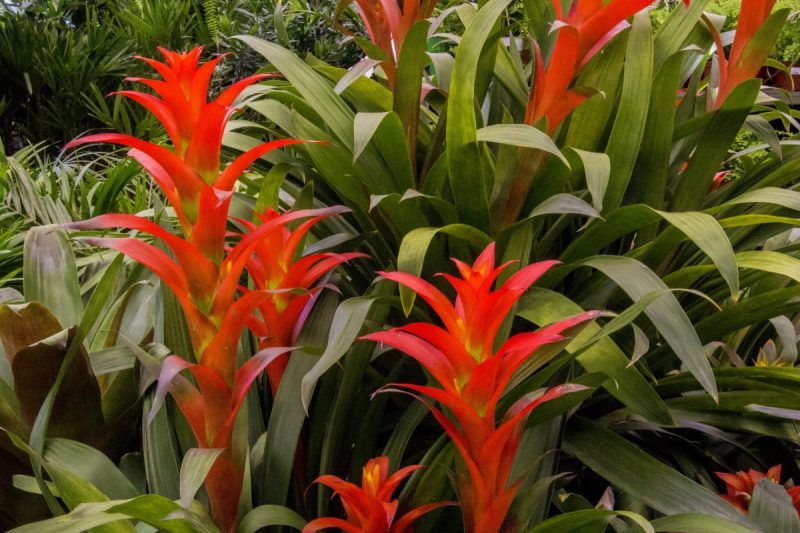
Guzmania is a Bromeliaceae native to Central and South America. It is an epiphyte, meaning it uses another plant as a support to grow, but it is not a parasite. Guzmania is often used as a houseplant. It is decorated with bright green, long, and narrow leaves that form a rosette, having a part in water retention, but especially with intensely colored bracts that protect the small, white-yellow flowers.
Species and varieties
Guzmania lingulata – it has green-bright straight and long leaves; the flowers are small, white-yellow, surrounded by red bracts, with a very decorative function.
Guzmania tricolor – the leaves are straight, long, and bright green; the flowers are small, white, surrounded by bracts colored in intense brown and red.
Guzmania musaica – the leaves are light green, with irregular brown spots; the flowers are small, white, surrounded by orange bracts.
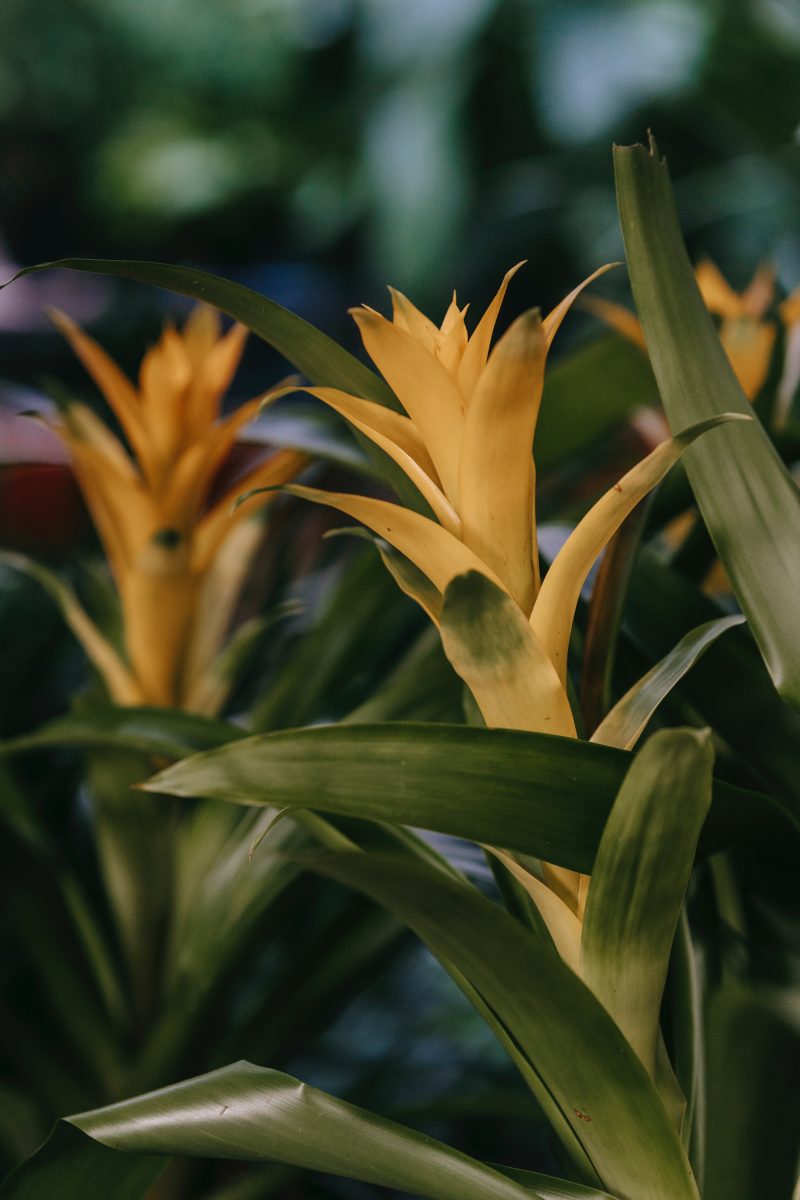
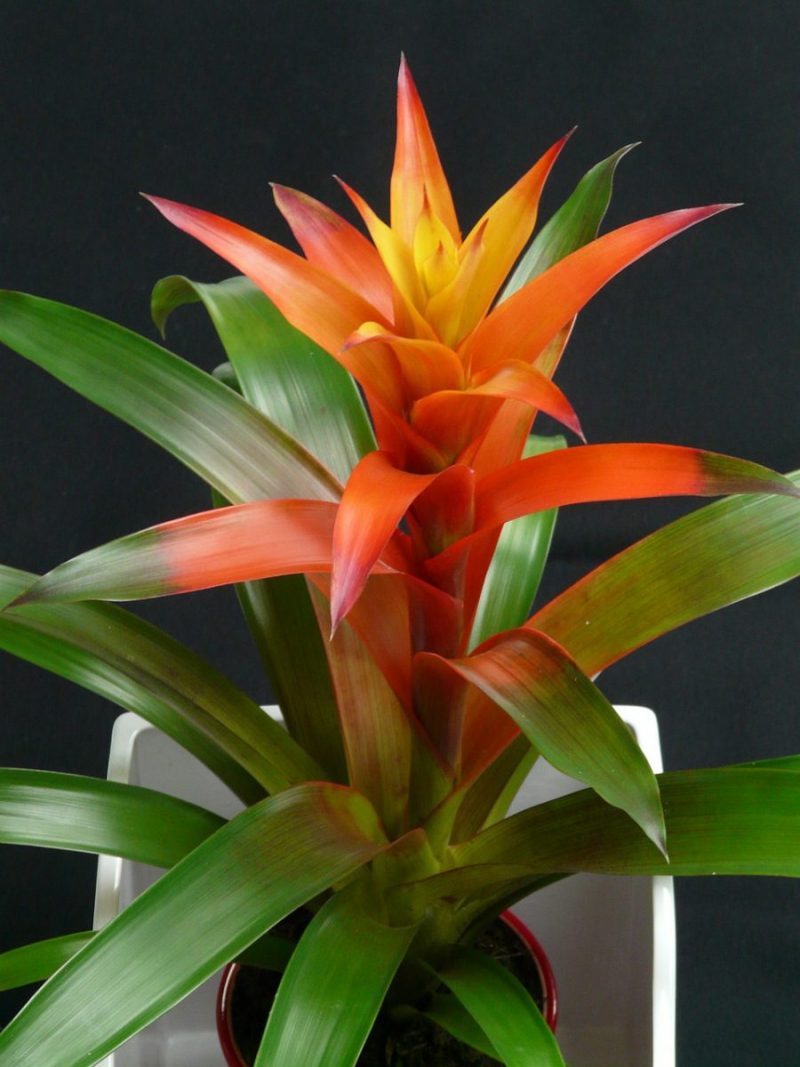
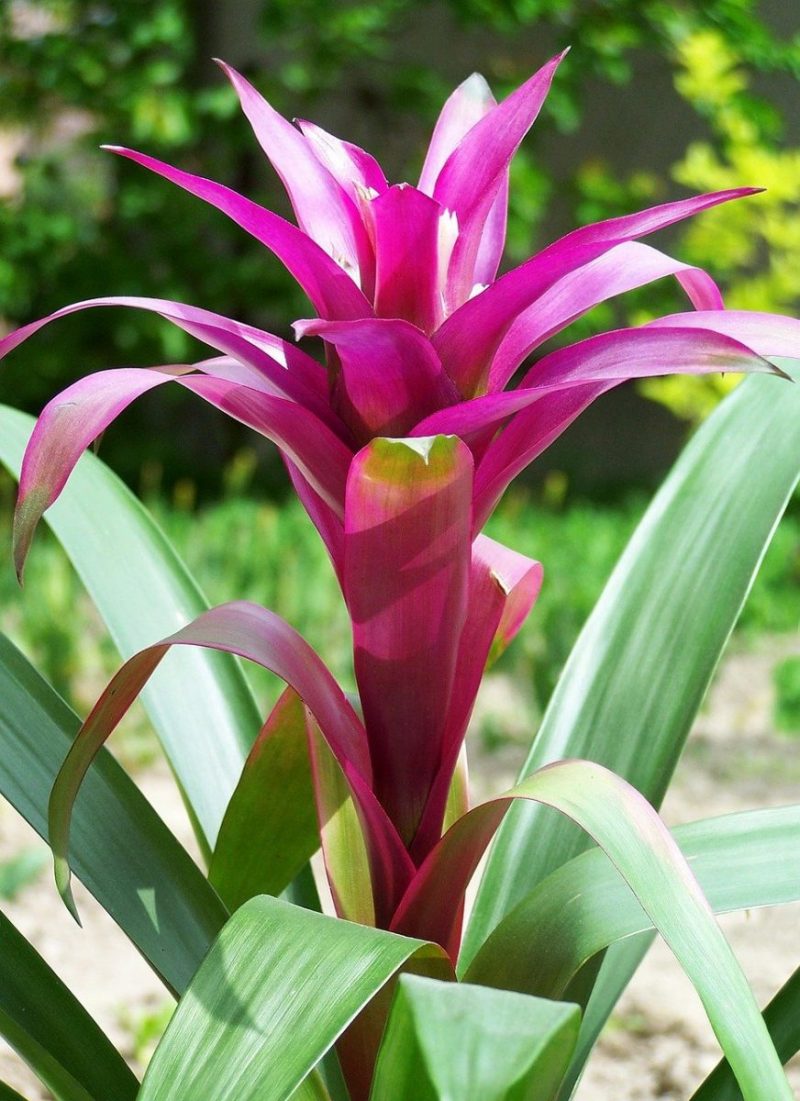
Environmental conditions
Light. It is a light-loving plant, but during the summer it must be protected from direct sunlight.
Temperature. It thrives at a temperature between 20-28º C in the spring-autumn period. In winter it is recommended that the temperature does not drop below 16º C.
Humidity. The plant needs constant humidity, which should be moderate both in the substrate and in the atmosphere.
Substrate. Guzmania prefers a fibrous substrate, with a slightly acidic pH of 5-6. Is recommended a mixture of peat, leaf soil, and sand (in equal parts).
Recommended products
-
You can find products on a different store
Change Store -
You can find products on a different store
Change Store -
You can find products on a different store
Change Store -
You can find products on a different store
Change Store -
You can find products on a different store
Change Store -
You can find products on a different store
Change Store -
You can find products on a different store
Change Store -
You can find products on a different store
Change Store -
You can find products on a different store
Change Store -
You can find products on a different store
Change Store -
You can find products on a different store
Change Store -
You can find products on a different store
Change Store -
You can find products on a different store
Change Store -
You can find products on a different store
Change Store -
You can find products on a different store
Change Store -
You can find products on a different store
Change Store -
You can find products on a different store
Change Store -
You can find products on a different store
Change Store -
You can find products on a different store
Change Store -
You can find products on a different store
Change Store -
You can find products on a different store
Change Store -
You can find products on a different store
Change Store -
You can find products on a different store
Change Store -
You can find products on a different store
Change Store
Watering
It should be done regularly with a small amount of water (preferably rainwater or non-calcareous water) so that the substrate is permanently damp, but not wet. Excessive moisture in the substrate affects the roots which are small and thin. Water must be permanently maintained in the rosette of leaves. This water should be replaced once every 1-2 months, and during the winter, if the temperatures drop below the normal limit, the water in the rosette should be drained.
Atmospheric humidity should be kept high by spraying water or by placing the plant on a layer of damp gravel.
Fertilization
It can be done monthly with liquid fertilizers, applied by spraying the leaves, or by pouring them into the rosette, in which case the concentration should be reduced.
Recommended products
-
You can find products on a different store
Change Store -
You can find products on a different store
Change Store -
You can find products on a different store
Change Store -
You can find products on a different store
Change Store -
You can find products on a different store
Change Store -
You can find products on a different store
Change Store -
You can find products on a different store
Change Store -
You can find products on a different store
Change Store -
You can find products on a different store
Change Store -
You can find products on a different store
Change Store -
You can find products on a different store
Change Store -
You can find products on a different store
Change Store -
You can find products on a different store
Change Store -
You can find products on a different store
Change Store -
You can find products on a different store
Change Store -
You can find products on a different store
Change Store -
You can find products on a different store
Change Store -
You can find products on a different store
Change Store -
You can find products on a different store
Change Store -
You can find products on a different store
Change Store -
You can find products on a different store
Change Store -
You can find products on a different store
Change Store -
You can find products on a different store
Change Store -
You can find products on a different store
Change Store
Propagation
Guzmania is propagated most frequently through separating the shoots that are formed at the base of the plant. It can also be propagated through seeds.
Recommended products
-
You can find products on a different store
Change Store -
You can find products on a different store
Change Store -
You can find products on a different store
Change Store -
You can find products on a different store
Change Store -
You can find products on a different store
Change Store -
You can find products on a different store
Change Store -
You can find products on a different store
Change Store -
You can find products on a different store
Change Store -
You can find products on a different store
Change Store -
You can find products on a different store
Change Store -
You can find products on a different store
Change Store -
You can find products on a different store
Change Store -
You can find products on a different store
Change Store -
You can find products on a different store
Change Store -
You can find products on a different store
Change Store -
You can find products on a different store
Change Store -
You can find products on a different store
Change Store -
You can find products on a different store
Change Store -
You can find products on a different store
Change Store -
You can find products on a different store
Change Store -
You can find products on a different store
Change Store -
You can find products on a different store
Change Store -
You can find products on a different store
Change Store -
You can find products on a different store
Change Store
Diseases and pests
The most common diseases are those caused by fungi such as Botrytis, Pythium, Fusarium, and Phytophthora that cause stem rot and root rot.
Among the pests, the plant is sensitive to the attack of mealybugs and mites.
In addition:
- being a plant with poorly developed roots, it is recommended that the pot be wider than tall and be supported by a plant stand.
- low atmospheric humidity or the use of hard water causes browning of leaf tips.
- Bromeliads bloom only once, then dry out, but at the base of the plant appear young shoots, from which new plants will form, which will bloom in turn.














































































































































































































































































































































































































































